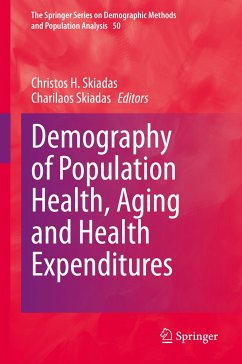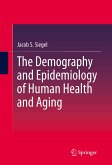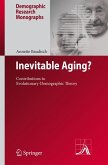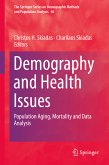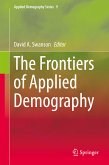Demography of Population Health, Aging and Health Expenditures (eBook, PDF)
Redaktion: Skiadas, Christos H.; Skiadas, Charilaos


Alle Infos zum eBook verschenken

Demography of Population Health, Aging and Health Expenditures (eBook, PDF)
Redaktion: Skiadas, Christos H.; Skiadas, Charilaos
- Format: PDF
- Merkliste
- Auf die Merkliste
- Bewerten Bewerten
- Teilen
- Produkt teilen
- Produkterinnerung
- Produkterinnerung

Hier können Sie sich einloggen

Bitte loggen Sie sich zunächst in Ihr Kundenkonto ein oder registrieren Sie sich bei bücher.de, um das eBook-Abo tolino select nutzen zu können.
This book provides theoretical and applied material for estimating vital parts of demography and health issues including the healthy aging process along with calculating the healthy life years lost to disability. It further includes the appropriate methodology for the optimum health expenditure allocation. Through providing data analysis, statistical and stochastic methodology, probability approach and important applications, the book explores topics such as aging and mortality, birth-death processes, self-perceived age, life-time and survival as well as pension and labor-force. By providing a…mehr
- Geräte: PC
- ohne Kopierschutz
- eBook Hilfe
- Größe: 19.92MB
![The Demography of African Americans 1930-1990 (eBook, PDF) The Demography of African Americans 1930-1990 (eBook, PDF)]() S. H. PrestonThe Demography of African Americans 1930-1990 (eBook, PDF)73,95 €
S. H. PrestonThe Demography of African Americans 1930-1990 (eBook, PDF)73,95 €![Supercentenarians (eBook, PDF) Supercentenarians (eBook, PDF)]() Supercentenarians (eBook, PDF)73,95 €
Supercentenarians (eBook, PDF)73,95 €![The Demography and Epidemiology of Human Health and Aging (eBook, PDF) The Demography and Epidemiology of Human Health and Aging (eBook, PDF)]() Jacob S. SiegelThe Demography and Epidemiology of Human Health and Aging (eBook, PDF)233,95 €
Jacob S. SiegelThe Demography and Epidemiology of Human Health and Aging (eBook, PDF)233,95 €![The Late Life Legacy of Very Early Life (eBook, PDF) The Late Life Legacy of Very Early Life (eBook, PDF)]() Gabriele DoblhammerThe Late Life Legacy of Very Early Life (eBook, PDF)73,95 €
Gabriele DoblhammerThe Late Life Legacy of Very Early Life (eBook, PDF)73,95 €![Inevitable Aging? (eBook, PDF) Inevitable Aging? (eBook, PDF)]() Annette BaudischInevitable Aging? (eBook, PDF)73,95 €
Annette BaudischInevitable Aging? (eBook, PDF)73,95 €![Demography and Health Issues (eBook, PDF) Demography and Health Issues (eBook, PDF)]() Demography and Health Issues (eBook, PDF)113,95 €
Demography and Health Issues (eBook, PDF)113,95 €![The Frontiers of Applied Demography (eBook, PDF) The Frontiers of Applied Demography (eBook, PDF)]() The Frontiers of Applied Demography (eBook, PDF)89,95 €
The Frontiers of Applied Demography (eBook, PDF)89,95 €-
-
-
Dieser Download kann aus rechtlichen Gründen nur mit Rechnungsadresse in A, B, BG, CY, CZ, D, DK, EW, E, FIN, F, GR, HR, H, IRL, I, LT, L, LR, M, NL, PL, P, R, S, SLO, SK ausgeliefert werden.
- Produktdetails
- Verlag: Springer International Publishing
- Seitenzahl: 452
- Erscheinungstermin: 24. August 2020
- Englisch
- ISBN-13: 9783030446956
- Artikelnr.: 60048763
- Verlag: Springer International Publishing
- Seitenzahl: 452
- Erscheinungstermin: 24. August 2020
- Englisch
- ISBN-13: 9783030446956
- Artikelnr.: 60048763
- Herstellerkennzeichnung Die Herstellerinformationen sind derzeit nicht verfügbar.
